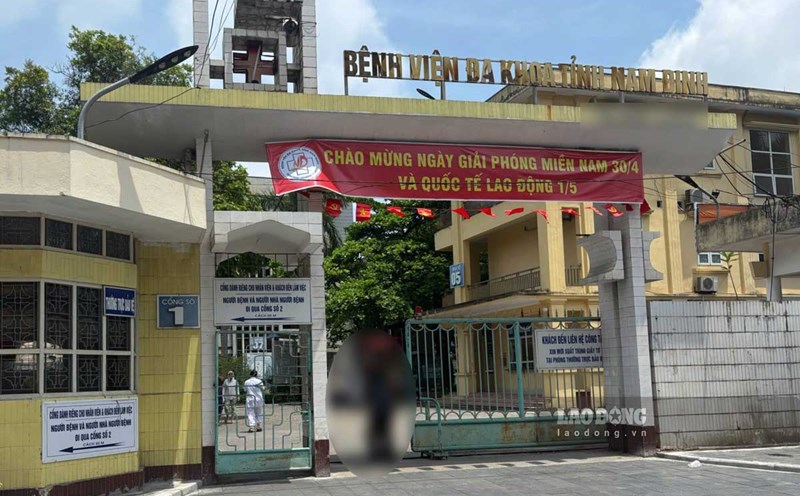The Ambassador's encouragement
"I was born in France and have lived in Belgium for a long time. I hope to enjoy organic chocolate produced in Vietnam" - Ambassador Guerrier confided. His sharing must be a great encouragement, because France and Belgium are already famous countries for chocolate production, while Vietnam still does not have a significant position in this market.
According to statistics from Helvetas Vietnam, the total cocoa growing area in Vietnam in 2024 will only reach 3,4071 hectares, of which Dak Lak, Dak Nong, Gia Lai, Lam Dong provinces account for 48%. Vietnam's total raw cocoa output is 4,789 tons/year, while according to data from the World Cocoa Association, the current output of cocoa worldwide is over 4 million tons/year.
The Ambassador's encouragement is not only in words but also in actions. From 2022 to present, the EU has sponsored a project of nearly 2 million Euros to support the conversion of the cocoa/chocolate industry in the Central Highlands and Southeast provinces to renewable and circular economic approaches, thereby applying a circular economy in the field of agricultural and food products more widely.
These days, farmers in Ea Kar district, Dak Lak province - where there are about 750 hectares of cocoa - are harvesting cocoa in an excited mood because of increased output, prices have also continuously increased thanks to signing a stable output with a number of enterprises.
Ms. Nguyen Hong Thuong - Director of Nhat Tam Cooperative in Ea dar Commune, Ea Kar District, Dak Nong, a unit receiving support from the EU project - said that the purchase price of wet cocoa beans this year is up to nearly 90,000 VND/kg.
If properly cared for, each hectare of cocoa will harvest an average of 500 - 700 million VND/year, with some households earning up to 1 billion VND. Nhat Tam Cooperative is the place to buy fresh cocoa beans from farmers with a commitment to the minimum price so that farmers can feel secure in developing this crop.

Mr. Nguyen Xuan Luu, a farmer in Ea Lar commune, happily expressed that farmers who earn 400 - 500 million VND a year "is so good that they can dream of anything". Mr. Nguyen Duc Thanh brought fresh cocoa bean bags to sell to Nhat Tam Cooperative in a happy mood, he boasted that he had just bought a new motorbike after 2 harves, each worth about 15 million VND.
Mr. Nguyen Kim Dinh, a farmer in Dak Wil commune, Cu cut district, Dak Nong province, currently owns 3 hectares of land with 3,000 perennial cocoa trees. According to him, in 2023, the purchase price of fresh cocoa beans only fluctuated between 24,000 - 25,000 VND/kg, but since last year, the price has been higher, helping him earn about 600 million VND.
In recent years, cocoa prices have been increasing continuously due to the impact of climate change on key growing areas around the world. For example, the Ivory Coast - the leading country in cocoa production - lost 3.8 million hectares of planting area, equivalent to 26%, in the period of 2001 - 2023. As demand increases and supply decreases, cocoa prices in the global market also increase, creating opportunities for cocoa farmers in the Central Highlands.
From circular cocoa to closed circular agriculture
Nhat Tam Cooperative, Dong Tien Cooperative in Cu Ni Commune, Ea Kar District, Dak Lak and Nhat Thong Dak Lak Company in Cu Bao Commune, Buon Ho Town, Dak Lak are 3 of the units that are being approved by the EU project through partners: Helvetas Vietnam, Community Development Center (CDC) and Grand-place Puratos Company to help develop circular cocoa and move towards other circular agricultural products.
Since 2007, the EU has implemented the SWITCH - ASIA Program to promote sustainable production and consumption models and behaviors in Asia. Promoting a circular economy in the agricultural sector is one of the focuses of the program in Vietnam and the cocoa industry was chosen as a pioneering model because it is large enough to create a meaningful impact, but small enough and focused enough to test and prove its effectiveness.

Mr. Pham Huu Thoi, Director of Nhat Thong Company, which is intercropping cocoa trees with other crops on an area of 300 hectares according to the circular model, has received the support that he said was "right person, right time" for the project. With the support of Helvetas Vietnam, the company has established a breeding garden, built a vermicompost farming model, produced biological plant protection drugs, and prepared a circular farming system to create organic products that meet international standards.
Meanwhile, at Nhat Tam Cooperative, circular economic solutions are being widely applied to cocoa production, from taking advantage of cocoa byproducts for organic fertilizer, animal feed, using cocoa waste to produce bio coal, using bio coal to make fertilizer for crops...
Standing next to the agricultural by-production incinerator into bio coal, Mr. Vu Duong Quynh, a consultant of the Agricultural Environment Institute for Nhat Tam Cooperative, said that with a cost of 15 million VND, the household-level furnace can only process 25 - 30% of the by-products of a household, but has also met the demand for 1/3 of the amount of fertilizer per year.
However, the most important thing is that the bio coal burned from cocoa by-products (fruit shells, branches, dried leaves, etc.) is of good quality, helping to improve soil, retain water and thereby reduce greenhouse gas emissions, while taking advantage of the circulation of cocoa trees.
Unleashing the potential of cocoa trees
Mr. Bach Thanh Tuan, Director of the CDC, Member of the Executive Committee of the Vietnam Coffee and Cocoa Association (VICOFA), did not hesitate to affirm that the EU project helps awaken the potential of the Vietnamese cocoa industry, arousing the potential of the Central Highlands and many other regions.
Thanks to training, farmers are gradually changing their awareness and aiming for products "packaged" by quality, environmental responsibility, clear traceability, meeting the strict standards of the European and world markets.
Mr. Tuan hopes that the next step will include carbon credits in this project as a way to awaken a new management method, contributing a small part to the Government's net zero goal by 2050.

For his part, Ambassador Julien Guerrier expressed his impression at seeing that, with the support of the EU, businesses and farms in Vietnam are taking the lead in upgrading production according to the circular economy model, especially in the cocoa sector.
The Ambassador also said that he visited a circular model in the Mekong Delta in the shrimp farming industry, where shrimp ponds are designed according to a closed circular system. The fish species in the ponds help treat waste from shrimp, creating a sustainable production chain. The Ambassador said that Vietnam is truly at the forefront and can completely become a model of a circular economy for other countries.











